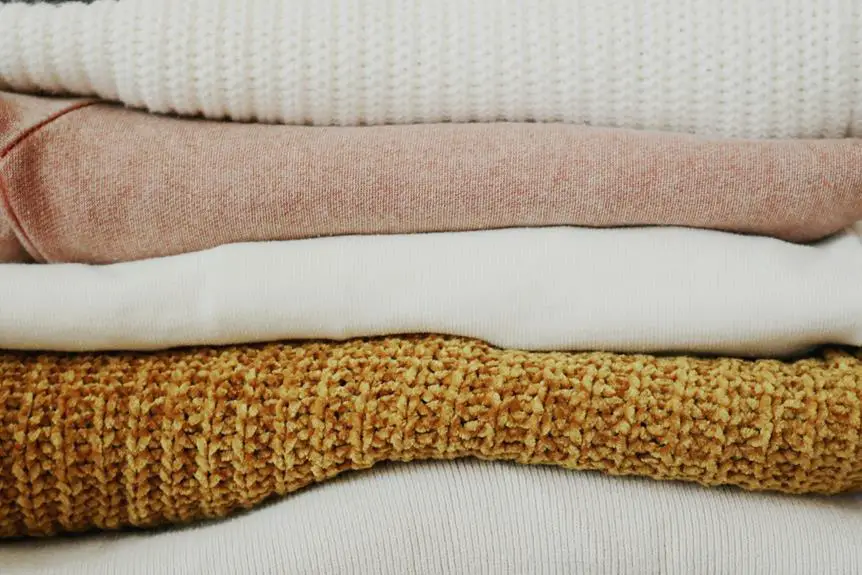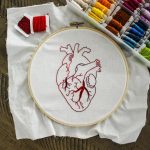As you consider the potential of poly tricot in your fashion designs, you'll want to think about how its unique properties can enhance your creations. You've likely encountered poly tricot in activewear and sportswear, but its uses extend far beyond those applications. Its smooth texture and breathability make it suitable for a wide range of garments, from luxe evening wear to everyday essentials. But what are the most innovative ways to utilize poly tricot's stretchy properties, durability, and versatility? Let's explore the various uses of poly tricot in fashion design to uncover new ideas and possibilities.
Table of Contents
Activewear and Sportswear Applications
When designing activewear and sportswear, you're likely to turn to poly tricot for its exceptional moisture-wicking properties, breathability, and quick-drying capabilities.
This fabric is ideal for garments that require high performance and comfort, such as running tops, leggings, and sports jerseys. Poly tricot's moisture-wicking properties help keep you dry and cool by drawing sweat away from the skin, while its breathability allows for airflow and ventilation.
You can use poly tricot to create a wide range of activewear and sportswear pieces, from base layers to outerwear. Its lightweight and smooth texture make it perfect for garments that require a full range of motion, such as yoga pants or cycling shorts.
Additionally, poly tricot's quick-drying capabilities make it easy to care for and maintain, allowing you to wash and wear your activewear and sportswear pieces multiple times without worrying about shrinkage or loss of shape.
Lining and Interfacing Uses
Incorporating poly tricot as a lining or interfacing in your garments can significantly enhance their overall performance, comfort, and durability.
When used as a lining, poly tricot helps to reduce friction between the garment and the skin, making it ideal for garments that require a full range of motion, such as dancewear or activewear. It also provides a smooth surface for the garment to slide over, reducing wrinkles and creases.
As an interfacing, poly tricot adds stability and structure to your garments, making it perfect for use in collars, waistbands, and buttonholes. It helps to maintain the shape of the garment, preventing stretching or sagging, and provides a crisp, smooth finish.
You can also use poly tricot as a stabilizer for stretchy fabrics, such as knits or spandex, to prevent them from losing their shape over time. By incorporating poly tricot into your garment construction, you can create clothes that aren't only comfortable and durable but also look great and perform well.
With its versatility and ease of use, poly tricot is a great addition to any fashion designer's toolkit.
Creating Dimensional Textures
By layering poly tricot over other fabrics or using it as a base for embellishments, you can create dimensional textures that add depth and visual interest to your garments.
This technique allows you to experiment with different weights, densities, and fiber contents, creating a unique tactile experience for the wearer.
You can use poly tricot as a backing for appliques, beading, or sequins, giving your designs a raised, three-dimensional effect.
When layering poly tricot, you can choose to leave the edges raw for a more organic look or finish them with a binding or topstitching for a crisper finish.
This technique is particularly effective when combined with other textures, such as suede, velvet, or lace.
By mixing and matching different textures, you can create complex, dynamic designs that invite the viewer to touch and explore.
With poly tricot as a base, you can push the boundaries of traditional textile manipulation and create truly show-stopping pieces.
Whether you're designing statement accessories or statement garments, poly tricot's versatility makes it an ideal choice for adding dimension and interest to your designs.
Poly Tricot in Evening Wear
When you think of evening wear, you likely envision stunning, high-end designs that make a statement.
Poly tricot can be a game-changer in this realm, allowing you to create luxe evening gowns that shimmer and shine under the lights.
Luxe Evening Gowns
With poly tricot as its base fabric, you can craft luxurious evening gowns that shimmer, drape, and move with an undeniable sophistication.
This fabric's smooth, lustrous surface and gentle drape make it perfect for creating elegant, high-end designs. Whether you're envisioning a floor-sweeping ball gown or a sleek, modern sheath, poly tricot is an excellent choice.
To get the most out of poly tricot in your evening gown designs, consider the following techniques:
- Emphasize draping: Poly tricot's fluid drape is one of its greatest assets. Use this to your advantage by creating designs that showcase the fabric's movement and flow.
- Add subtle embellishments: Poly tricot's smooth surface provides a perfect backdrop for delicate beading, sequins, or other subtle embellishments that add depth and visual interest to your design.
- Play with layering: Poly tricot can be layered to create a sense of depth and dimension. Experiment with layering sheer or semi-sheer poly tricot over a solid-colored underlay to create a dramatic, eye-catching effect.
Flowing Cocktail Dresses
Poly tricot's fluidity makes it an ideal choice for crafting flowing cocktail dresses that cascade down the body, creating a mesmerizing display of movement and elegance.
As a fashion designer, you'll love working with poly tricot for evening wear, especially for dresses that need to make a statement. You can create floor-sweeping gowns or tea-length dresses that flow effortlessly with every step.
When working with poly tricot for flowing cocktail dresses, consider adding subtle draping techniques to enhance the fabric's fluidity. You can also experiment with gathering, ruffles, or layering to add texture and depth to your design.
Don't be afraid to play with different colors and patterns – poly tricot's versatility allows it to work well with a range of hues and prints. As you drape the fabric on your mannequin, imagine how it will flow on the wearer.
With poly tricot, you can create dresses that not only turn heads but also make the wearer feel confident and glamorous. With its fluid movement and elegance, poly tricot is an excellent choice for flowing cocktail dresses that will make your evening wear designs shine.
Making Stretchy Garment Components
When you're working with poly tricot in fashion design, you'll often want to create garment components that stretch and move with the wearer.
You'll focus on three key areas: elastic waistbands that provide a comfortable fit, stretchy sleeves that allow for ease of movement, and form-fitting seams that hug the body.
Elastic Waistbands
Creating a comfortable and flexible fit is crucial in garment design, and incorporating elastic waistbands is a great way to achieve this, especially in activewear and loungewear. You can use poly tricot to create elastic waistbands that provide a full range of motion and a comfortable fit.
This is particularly important in garments like yoga pants, leggings, and sweatpants, where a flexible waistband can make all the difference in the wearer's comfort level.
When working with poly tricot to create elastic waistbands, you'll want to consider the following:
- Choose the right width: Select a poly tricot fabric that's wide enough to provide a comfortable fit, but not so wide that it becomes bulky.
- Use a suitable elastic: Pair your poly tricot fabric with an elastic that has a similar stretch ratio to ensure a smooth, flexible fit.
- Finish the seams carefully: Use a serger or zigzag stitch to finish the seams of your elastic waistband, preventing fraying and ensuring a professional finish.
Stretchy Sleeves
To add a touch of comfort and flexibility to your garments, consider incorporating stretchy sleeves made from poly tricot, which can greatly enhance the overall wearability of your designs. Poly tricot's four-way stretch allows for a full range of motion, making it perfect for sleeves that need to move with the wearer. You can use poly tricot for long sleeves, short sleeves, or even sleeveless designs with stretchy armholes.
| Design Element | Poly Tricot Benefit |
|---|---|
| Sleeve length | Poly tricot's stretch allows for a comfortable fit regardless of sleeve length |
| Armhole shape | Poly tricot's flexibility enables a smooth, chafe-free fit around the armhole |
| Sleeve style | Poly tricot's drape and recovery make it suitable for a variety of sleeve styles, from fitted to flowy |
When working with poly tricot for stretchy sleeves, keep in mind that it can be prone to curling or fraying. To combat this, use a serger or zigzag stitch to finish the seams. You can also use a lining or interfacing to add stability and prevent curling. With poly tricot, you can create sleeves that are both comfortable and stylish, elevating your garment designs to the next level.
Form-Fitting Seams
By incorporating poly tricot's stretchy properties into your garment components, you can now focus on crafting form-fitting seams that move with the wearer, allowing you to create a more cohesive and comfortable overall design. This is especially important for garments that require a full range of motion, such as activewear or dancewear. By using poly tricot to create stretchy seams, you can ensure that your design stays in place while still providing a full range of motion.
When creating form-fitting seams with poly tricot, consider the following techniques:
- Use a zigzag stitch: This stitch is perfect for stretchy fabrics like poly tricot, as it allows for flexibility and movement while still providing a secure seam.
- Use a stretch needle: A stretch needle is designed specifically for sewing stretchy fabrics, and can help prevent skipped stitches and other issues.
- Don't pull the fabric too tight: When sewing stretchy seams, it's essential to avoid pulling the fabric too tight, as this can cause the seam to pucker or distort. Instead, allow the fabric to relax and move with the wearer.
Adding Structure to Designs
When working with poly tricot, you'll often find yourself adding structure to designs frequently to balance out the fabric's inherent drape and flexibility. This is because poly tricot can sometimes appear too fluid or loose, especially when used in garments that require a bit more shape and definition.
To combat this, you can use various techniques to add structure to your designs.
One way to do this is by incorporating seams and darts strategically. By placing seams in key areas, such as the sides or shoulders, you can create a more defined silhouette. Darts can also be used to add shape and contour to the fabric, especially in areas like the bust or waist.
Additionally, you can use interfacing or stabilizers to give your designs more body and stability. These can be especially useful in areas like collars, waistbands, or hemlines, where you want to maintain a crisp, clean finish.
Sustainable Fashion Solutions
As you explore poly tricot in fashion design, you're likely looking for ways to make your creations more eco-friendly, and that's where sustainable fashion solutions come in. Poly tricot, a versatile and durable fabric, can be used to create garments that not only reduce waste but also promote environmentally responsible fashion practices.
To incorporate sustainable fashion solutions into your poly tricot designs, consider the following:
- Upcycle old garments: Breathe new life into old clothes by transforming them into unique, one-of-a-kind pieces using poly tricot. This approach reduces waste and gives old garments a second chance.
- Use eco-friendly dyes: Choose environmentally friendly dyes that minimize harm to the environment and promote sustainable fashion practices.
- Design for longevity: Create garments that are built to last, reducing the need for frequent replacements and waste. Poly tricot's durability makes it an ideal choice for designing long-lasting garments.
Frequently Asked Questions
Can Poly Tricot Be Used for Outdoor Gear and Equipment?
You're considering poly tricot for outdoor gear and equipment, but it's not the best choice. It's lightweight and breathable, but lacks durability and water resistance, making it more suitable for indoor or casual wear.
Is Poly Tricot Suitable for People With Sensitive Skin?
You're wondering if poly tricot is suitable for people with sensitive skin. It's generally considered hypoallergenic and gentle, but you'll still want to look for certifications like Oeko-Tex or Bluesign to ensure it meets your standards.
Can Poly Tricot Be Dyed or Printed With Custom Designs?
You can definitely dye or print poly tricot with custom designs, but it's essential to follow specific guidelines to achieve the best results. You'll need to choose the right dye or ink, and consider factors like fabric weight and weave.
How Does Poly Tricot Compare to Other Types of Knit Fabrics?
You'll find poly tricot compares favorably to other knit fabrics like cotton and rayon in terms of durability and wrinkle resistance, but it often falls short in breathability and softness, making it ideal for outerwear and activewear.
Can Poly Tricot Be Used for Home Decor and Upholstery Projects?
You can definitely use poly tricot for home decor and upholstery projects. It's durable, easy to clean, and resistant to wrinkles, making it perfect for items like throw pillows, ottomans, and even wall coverings.
- How Does Ring Spun Cotton Affect Garment Fit and Shape Retention? - August 13, 2024
- What Are the Challenges in Producing Ring Spun Cotton? - August 13, 2024
- Is Ring Spun Cotton Suitable for Plus-Size Clothing? - August 13, 2024






